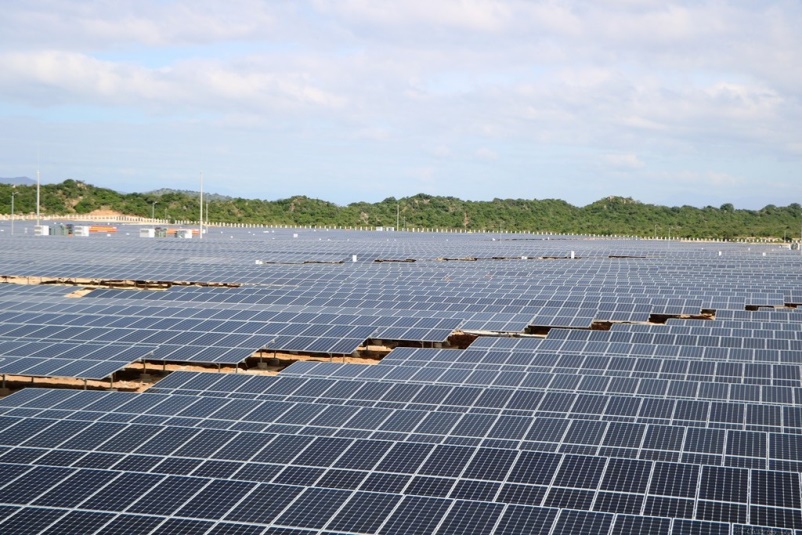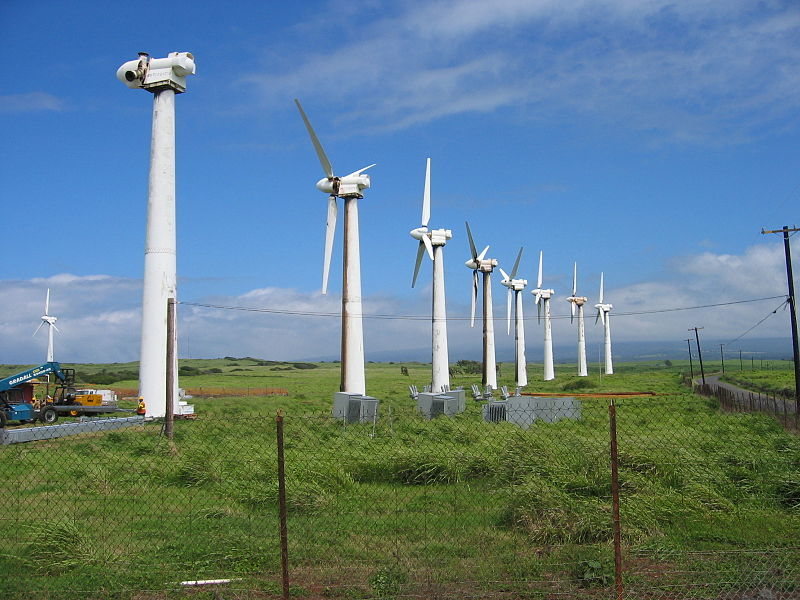
A solar power plant in Ninh Thuan province.
Almost two years since it was issued, Prime Minister Nguyen Xuan Phuc’s Decision No.11/2017/QD-TTg on mechanisms to encourage the development of solar power projects in Vietnam has created a magnet for investors in this field.
In January, the Solar 1 factory of the BP Solar JSC in Ninh Thuan officially generated electricity for the national grid. With the capacity of 46MWp, it is designed to produce some 75 million kWh each year.
Last April, a complex of three solar power plants with the total capacity of 330 MWp was inaugurated in the south central province of Ninh Thuan. Invested in by BIM Energy of BIM Group and AC Energy of the Philippines’s Ayala Corp., it is Southeast Asia’s biggest solar power complex at present.
As of April 23, only four solar power plants in Vietnam had started commercial operation, but the number rose to 27 by May 17.
The additional 61 solar power plants in June are expected to generate a total capacity of 2,000MW.
With 88 solar power plants added to the national grid, renewable-energy (wind and solar) power plants in the country will generate about 4,000MW.
Renewable-energy power plant projects are mainly in the southern and south-central region, helping EVN to reduce pressure of supplying power to the southern region, a major economic hub of the country.
Aside from big investors, solar power development has also attracted many households.
With just a few rooftop solar panels, many households have been able to generate enough electricity not just for daily use, but also to put towards the national grid. Solar power, bought at 2,134 VND (0.09 USD) per kWh, has become a source of income for a number of families.
Nguyen Ngoc Tuong Vi, a division head at the Ho Chi Minh City Power Corporation, said the firm has connected 1,432 rooftop solar power systems of local households with the city’s grid. They have the total capacity of 17.46MWp, generating more than 4 million kWh to the grid.
The sector has spent more than 8.5 billion VND on buying the electricity from locals, she noted.
Deputy Director General of the Southern Power Corporation Nguyen Van Ly said his firm had linked more than 1,290 household rooftop systems with the national grid as of mid-May. With their panels’ total capacity of 20,299kWp, they have generated nearly 3 million kWh of power.
He added that the corporation will step up communications to encourage people to install more rooftop solar panels in the time ahead.
According to the Ministry of Industry and Trade, 121 solar power projects have been added to the national and provincial electricity development plans. They are expected to have the combined capacity of 6,100 MW before 2020.

A wind power plant in Ninh Thuan province. (Photo: Nld)
An EVN report revealed that solar power projects, which have so far added to the Power Development Master Plan VII, have a combined capacity of some 15,000 megawatt peak, thanks to the attractive power sale price.
Under the Prime Minister’s decision dated April 11, 2017 on encouraging solar power projects in Vietnam, projects connected to the national grid from June 1, 2017 to June 30, 2019 will be eligible to sell electricity to EVN at 2,086 VND (9.35 US cent) per kWh, excluding Value Added Tax (VAT), and adjusted according to the Vietnamese dong-US dollar exchange rate.
The period for electricity purchase contracts with EVN is set for 20 years from the start of commercial operations. The decision, which came into effect in early June last year, will expire late next month.
Solar and wind power plant projects are mainly situated in the south-central and southern parts of the country because of their favorable climate conditions. These regions have a load capacity accounting for roughly 50% of the total.
Therefore, the operations of these projects are expected to reduce the shortage of electricity to some extent in the southern region. This will help secure the electricity supply and reduce pressure on power system operations.
However, Nguyen Duc Ninh, deputy director of the Electricity National Load Dispatch Center, was quoted by the Vietnam News Agency as saying that as of May 17, EVN had connected 27 solar power plants with the national power grid, at a total capacity of some 1,500 megawatts (MW). There are nine plants in the south, 17 in central Vietnam and one in the north.
A total of 44 other plants in May and June are being linked to the grid, so each week sees an average of 10 plants starting operations, which is regarded as a heavy workload for his center, Ninh said.
He added that work on each solar power project takes one to two years to complete, but the development of the corresponding transmission grid requires three to four years of work.
Given the current situation, many experts predicted that the electricity system would face issues related to the electricity lines and transformers, causing system instability and device danger.
Mai Duy Thien, a representative of the Vietnam Clean Energy Association, said that the source capacity of renewable energy varies according to weather conditions, while transmission capacity varies from 60%-80% over a period of only 5-10 minutes and occurs randomly in the same project area.
Therefore, the electricity system must stay operational to maintain the balance between the source and transmission, he said.
The EVN report pointed out that given an installed capacity of 3,000 MW at solar power plants with a margin of error at 20%, standby power requires up to 600 MW, equivalent to the output of a large coal power plant, to maintain its corresponding output. This is forecast to cause difficulties and raise operational costs for the State group.

















